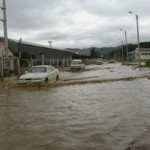- The successful Grameen Shakti Programme in Bangladesh highlights the importance of clean energy solutions and suitable approaches to financing their adoption by low income communities. Grameen Shakti (or Grameen Energy in English) provides soft credits through innovative financial packages to make solar home systems (SHSs) available and affordable to rural populations. By the end of 2009, more than 320,000 SHSs had been installed under the programme, in addition to biogas plants and improved cooking stoves. Grameen Shakti aims to have installed over 1 million SHSs by 2015.
- The potential for energy and resource efficiency is large in LDCs, with important gains possible through energy saving. In Senegal, a net energy importer, a 100% replacement of installed incandescent lamps with Compact Fluorescent Lamps (CFLs) at an estimated cost of US $ 52 million, would lead to energy savings of 73% and cost savings of nearly US$ 30 million per year.
- Opportunities to leapfrog are being seized where they exist. For example, in the aluminum sector, aluminum smelters in Africa are among the most energy-efficient in the world mainly because new production facilities employ the Latest Smelting Technologies.
Despite their limited contribution to the problem of climate change, LDCs are among the most vulnerable countries to the effects of climate change, making it critical for the international community to scale up international cooperation in support of adaptation to climate change. Of particular importance is the Least Developed Countries Fund (LDCF), created to address the climate change adaptation needs of the LDCs.
A supportive international policy framework that responds to specific challenges facing the poorest countries will be critical in ensuring LDCs’ successful transition to a green economy. International sources of financing to support clean technology adoption and trade-related capacity building in green sectors are urgently needed.
“Through concerted national and international action, realizing a green economy could make a valuable contribution to enhanced economic diversification, inclusive growth, poverty reduction and achievement of the Millennium Development Goals in LDCs,” said Mr. Diarra of UN-OHRLLS. “The outcomes of the Fourth United Nations Conference on the Least Developed Countries can provide a critical foundation and action points in this direction.”
Notes:
The report, Why a Green Economy Matters for the Least Developed Countries, can be found on the LDC-IV Conference website at:
http://www.un.org/wcm/content/site/ldc/lang/en/home/pid/16529
Since 1971, the United Nations has denominated “Least Developed Countries” (LDCs) as a category of States that are deemed highly disadvantaged, exhibiting the lowest indicators of socioeconomic development, combined with the lowest Human Development Index ratings. Currently, the list includes 48 countries: 33 in Africa, 14 in Asia and the Pacific, and one in Latin America.
Source: UNEP.












